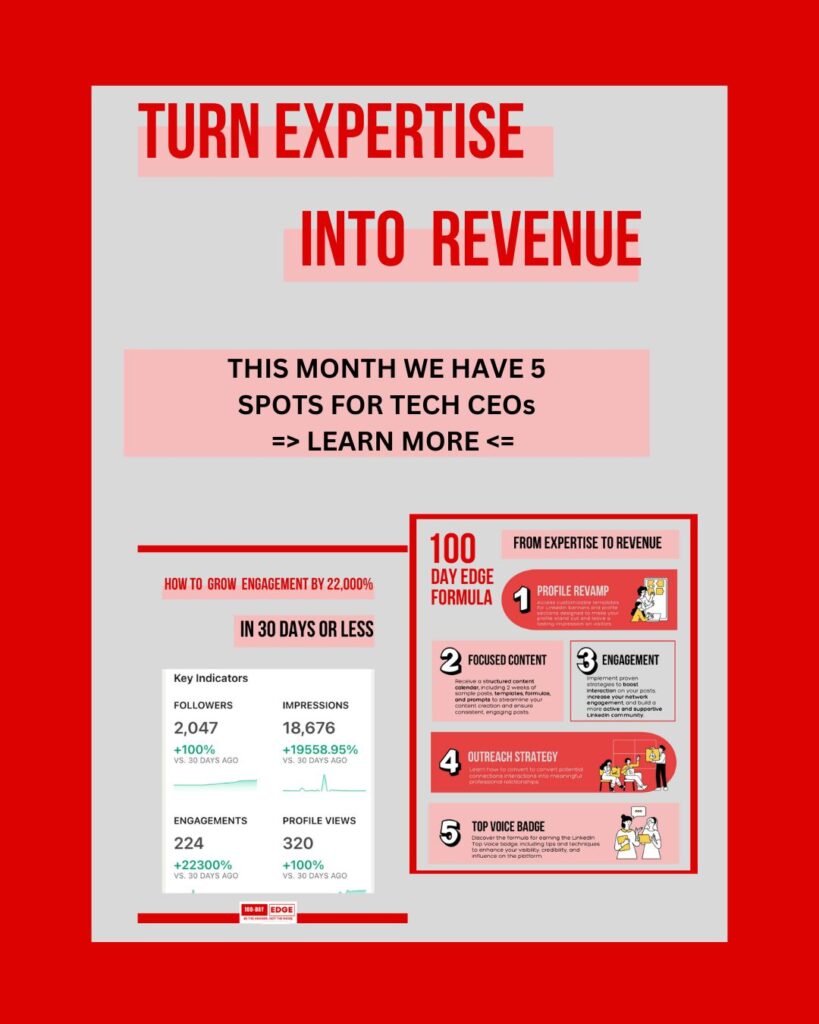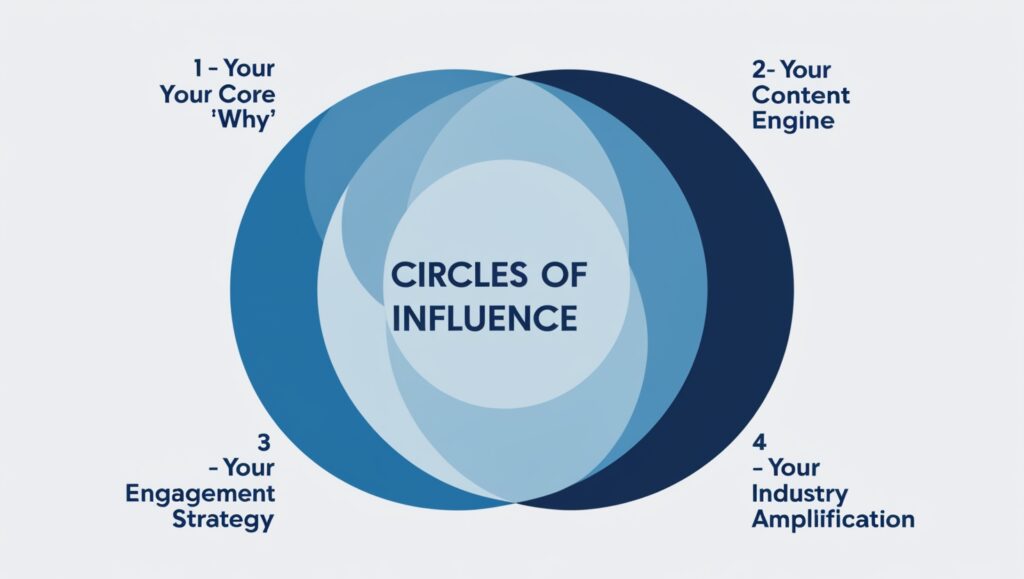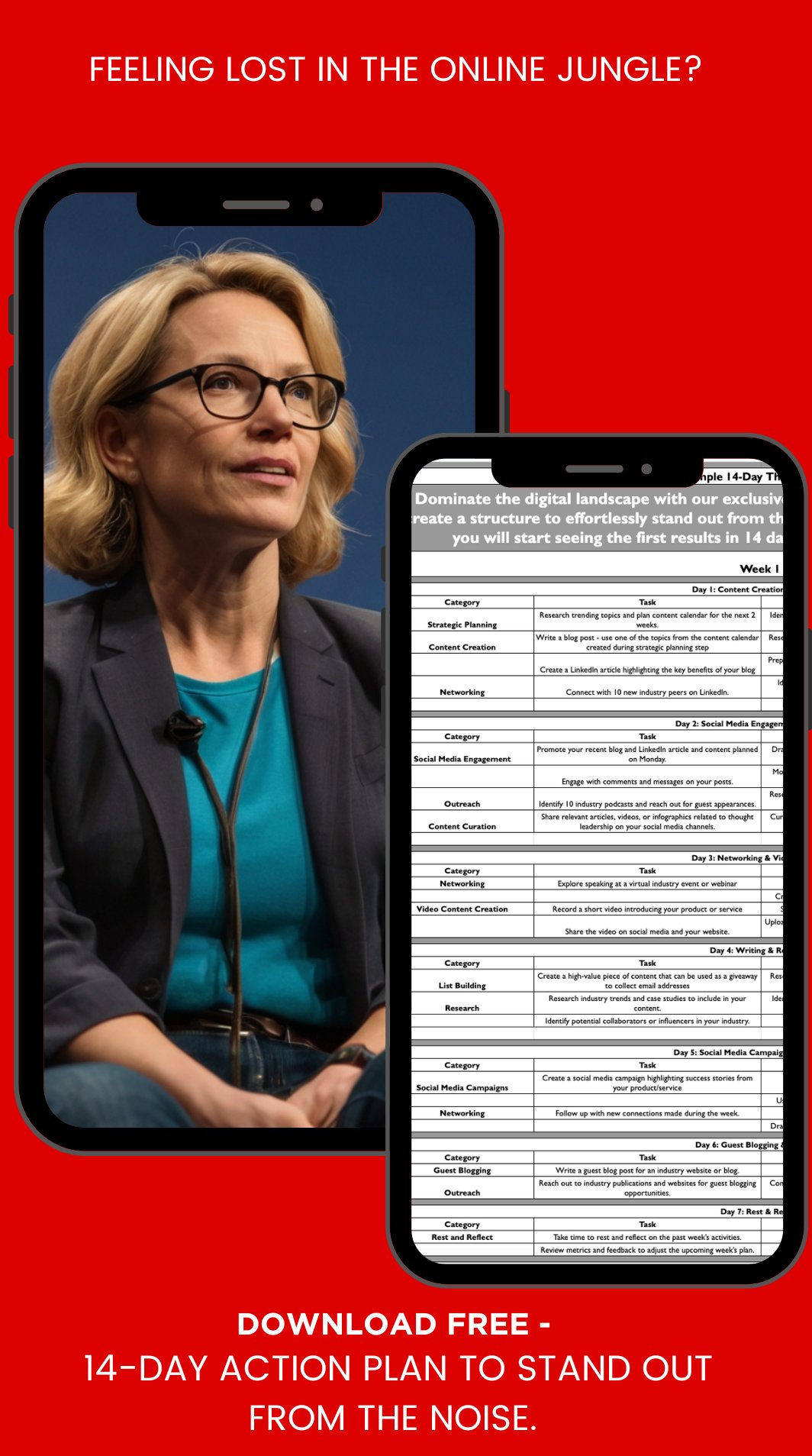“Another fire to put out, another board update due, and now my team wants me to be more ‘visible’ online?”
A fellow CEO texted me this at 11 PM two nights ago, clearly frustrated.
The next morning, he lost a key enterprise deal to a competitor whose CEO had recently been featured in Forbes discussing industry trends.
The connection?
The client mentioned they “felt more confident in the company’s vision and leadership.”
This isn’t a coincidence – it’s a pattern I’m seeing with increasing frequency.
In an ecosystem where every tech company claims to be innovative, buyers aren’t just evaluating your product; they’re investing in your vision of the future.
Our voice matters more than ever. Our thoughts and insights are our currency.
Yet, as I’ve observed in countless conversations with fellow CEOs, many of us struggle with the same question:
“Is investing time in thought leadership worth it when we’re already juggling product roadmaps, team scaling, and investor relations?”
Let me start with a stark reality: silence isn’t neutral – it’s a deficit.
When 73% of B2B buyers report consuming thought leadership content before making purchasing decisions, staying on the sidelines isn’t just missing an opportunity; it’s potentially ceding ground to competitors.
Table of Contents
ToggleThe Real Barriers: Beyond Time Constraints
In my conversations with tech CEOs, I’ve noticed that time isn’t the real barrier – it’s often something deeper:
- Fear of public scrutiny in an era where every tweet can impact stock prices
- Concern about revealing too much in a competitive landscape
- Uncertainty about maintaining a consistent voice while scaling rapidly
- Worries about the ROI of personal branding efforts
Sound familiar? These concerns are valid, but they shouldn’t be paralytic. Let’s transform these challenges into a structured pathway to influence.
The Four Circles of Influence: A Strategic Framework
Think of building thought leadership like developing a product – it requires a clear strategy, iterative improvements, and measurable outcomes. Let’s break down the four critical circles of influence that every tech leader should master.
Circle 1: Establishing Your Core “Why”
“Everyone’s talking about AI transformation, cloud migration, and digital innovation – why should anyone listen to my perspective?”
This question, posed by a Series B CEO during a recent advisory session.
It cuts to the heart of thought leadership.
In a world where tech insights are abundant but genuine wisdom is rare, your unique journey matters more than you think.
Consider this: 82% of B2B decision-makers say they choose vendors based on thought leadership that provides a clear, compelling vision.
Yet most tech leaders spend more time perfecting their pitch decks than articulating their deeper mission.
The secret weapon isn’t just having innovative technology – it’s knowing exactly why you’re building it and who you’re building it for.
Your journey starts with two critical components:
Internal Why
- What technological or business transformation drives you?
- Which industry problems keep you awake at night?
- What unique insights have you gained from your journey?
This isn’t just philosophical – it’s strategic. Your authentic driving force becomes your unique value proposition in the thought leadership space.
External Why
- What are the pressing challenges your target market faces?
- Which industry trends are creating uncertainty for your peers?
- Where do current thought leaders fall short in addressing these issues?

Pro Tip: Use tools like SparkToro or LinkedIn Analytics to identify conversation gaps in your industry. These gaps are your opportunities.
Circle 2: Building Your Content Engine
“What if I say the wrong thing?”
“What if our product strategy shifts?”
“How do I maintain authenticity at scale?”
These are questions I hear consistently from fellow tech CEOs. While Circle 1 helped you find your “why,” Circle 2 is where we transform that purpose into impact.
Think of it as building your personal API – a systematic way to scale your insights without scaling your time investment.
I recently spoke with a CEO who went from zero industry presence to becoming a go-to voice in AI ethics within six months.
Their secret wasn’t working harder; it was building a smart content engine. One that amplified their existing knowledge rather than creating new obligations.
This is where many tech CEOs stumble, but it’s simpler than it appears:
Your Authority Platform
- Secure your personal domain (firstnamelastname.com)
- Develop a content hub that showcases your unique insights
- Create a clear editorial calendar aligned with your company’s major initiatives
Content Strategy Matrix
- Core Topics (30%): Your primary expertise areas
- Industry Analysis (30%): Trends and predictions
- Leadership Insights (20%): Team building, culture, scaling
- Innovation & Tech (20%): Forward-looking perspectives
Distribution Channels
- LinkedIn for deep industry insights
- Twitter for real-time engagement
- Company blog for comprehensive analysis
- Industry publications for broader reach

Circle 3: Audience Engagement Architecture
“I posted three articles last month and heard nothing but crickets.”
A unicorn-status CEO shared this frustration with me recently. It’s a common scenario – you’re creating content, but it feels like shouting into the void.
The truth?
Content without strategic engagement is like hosting a party but forgetting to send invitations. The magic isn’t just in what you say; it’s in how you build connections around your insights.
Success here requires systematic approach:
Strategic Engagement Plan
- Daily: 15 minutes of targeted engagement
- Weekly: One piece of original content
- Monthly: One in-depth analysis or industry report
- Quarterly: Major thought piece or industry prediction

Community Building
- Create a private Slack channel for industry peers
- Host monthly virtual roundtables
- Engage in targeted LinkedIn groups
- Participate in relevant Twitter spaces
Circle 4: Industry Impact Amplification
“TechCrunch featured our competitor’s CEO again, while we’re doing more innovative work.”
Sound familiar?
Many tech leaders mistakenly believe media attention is purely luck or based on who you know.
In reality, it’s about strategic positioning and deliberate amplification. I’ve seen CEOs go from unknown to industry oracle in 12 months by following a clear progression of influence building.
This is where your influence becomes measurable:
Media Strategy
- Start with industry-specific podcasts
- Graduate to tech-focused publications
- Build relationships with key journalists
- Leverage company news for personal branding
Speaking Circuit
- Begin with local tech meetups
- Progress to industry panels
- Target keynote opportunities at major conferences
- Create your own signature events
Practical Implementation for Time-Strapped CEOs
Let’s address the elephant in the room – you don’t have time to manage all this personally. Here’s your execution framework:
- Core Content Creation (2 hours/month)
- Monthly brain dump with a content strategist
- Professional editing and distribution
- Repurposing across platforms
- Daily Engagement (15 minutes)
- Focus on one platform (LinkedIn recommended)
- Engage with 3-5 key posts
- Share one insight or update
- Team Support
- Assign a dedicated content manager
- Weekly content calendar review
- Monthly metrics analysis
Measuring Impact: Beyond Vanity Metrics
Track these key performance indicators:
- Inbound partnership opportunities
- Speaking invitations
- Media requests
- Employee attraction and retention
- Customer acquisition influence
Common Pitfalls to Avoid
- Inconsistent messaging
- Over-automation of engagement
- Neglecting authentic connections
- Focusing solely on company promotion
- Ignoring industry conversations
Looking Ahead: The Future of Tech Leadership
As we navigate an increasingly complex tech landscape, thought leadership isn’t just about personal branding – it’s about shaping industry dialogue, attracting top talent, and positioning your company for long-term success.
Your voice matters. Your experiences are unique. Your insights can guide others. The question isn’t whether to build your circles of influence, but how to do it efficiently and authentically.
Ready to start? Begin with Circle 1 this week. Spend 30 minutes mapping out your “Why.” It’s the foundation everything else builds upon.
Want to discuss your thought leadership strategy? Let’s connect. Share your thoughts in the comments below or reach out directly.

This month, my team is helping 5 technology leaders transform their expertise into tangible business results.
In 100 days, you’ll:
- Stage 1: Define your EDGE and optimize your online presence.
- Stage 2: Engage your tribe and land your first high-value client.
- Stage 3: Set your EDGE on fire with strategic content and recurring revenue.









